Mixed Minerals
|
DXL1
Azurite
Milpillas
Mine, Cuitaca, Mun. de Santa Cruz, Sonora, Mexico
6.4x 6.0x 3.0
cm
$895
A
cluster of lustrous azurite crystals from recent finds at the Milpillas
Mine.
For
the size, I think this is a pretty good price, particularly given the
asking prices at shows and elsewhere on the internet. There are a
couple small chips, but given the luster and arrangement of the
crystals, it is very, very hard to see.
|
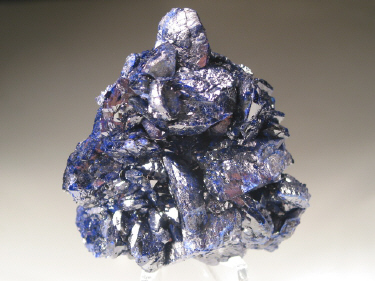 |
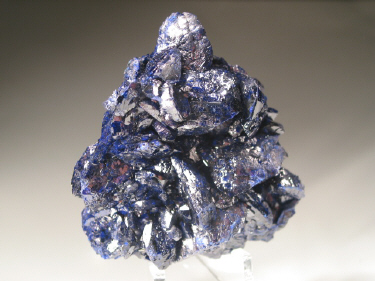 |
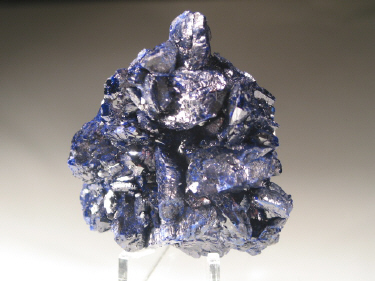 |
|
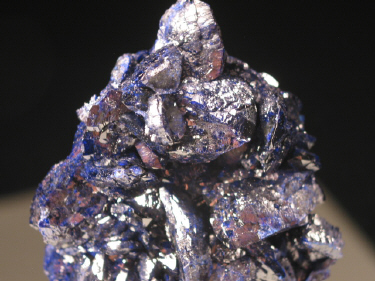
|
|

DXL26
Dioptase with Conichalcite
Cobre
Llama Mine, Ica Department, Peru
13.7x
9.5x 8.7 cm
$580
An
cabinet sized dioptase from Peru, exceptional for the country both for
its size as well as for its richness. This specimen comes from a
find made around 2007-2008. The
lighter green mineral is conichalcite.
I've
seen quite a few of these in Peru and in the US, but this is definitely
one of the best examples I've come across.
|
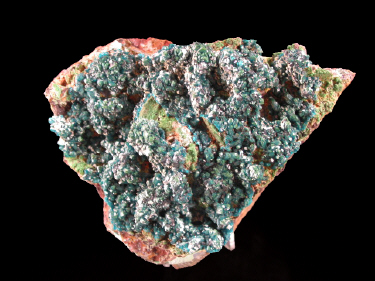 |
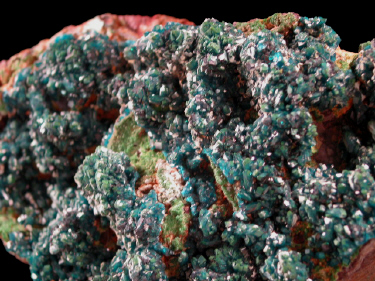 |
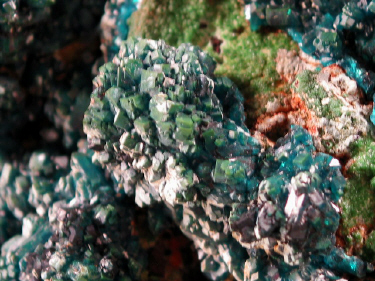 |
|
DXL2
Barite
Linwood
Mine, Buffalo, Scott Co., Iowa, United States
16.5x
10.5x 3.5 cm
$395
A
sizable and exceptionally lustrous barite from the Linwood Mine, located in the Midwestern state of
Iowa. the Linwood Mine has produced some of the country's finest (and
certainly largest) barite crystals, though it had not received the same
attention as Elk Creek (South Dakota), the various Colorado localities,
or the Meikle Mine (Nevada).
The
crystal is double terminated, and has a number of other crystals perched
to it. Like 98% of these, the back side is not much to look at--
they tended to form against flat sedimentary surfaces.
There
are a couple scratches/ chips about half way up the main crystal, on the
left. These are visible in the pictures, though perhaps not as
much as in person. Given what
these were selling for (and what some folks are still asking) this is
still a very good price for a double terminated crystal of this size/
luster.
The Linwood Mine
opened in 1941 and is an active producer of calcium carbonate
products, which are used in glass and plastic manufacture, cements and
other building materials, feed, water purification, and various other
chemical applications. Given the high purity of product necessary
for such uses, the presence of these barium sulfate crystals is actually
considered a bad thing--when crushed into the mix, they become
contaminants.
The
site was originally operated as a quarry, though is now an underground
mine.
The
Linwood Mine is an active producer of calcium carbonate products, as
such the presence of these crystals is actually considered a bad thing,
as far as the purity of the product is concerned.
|
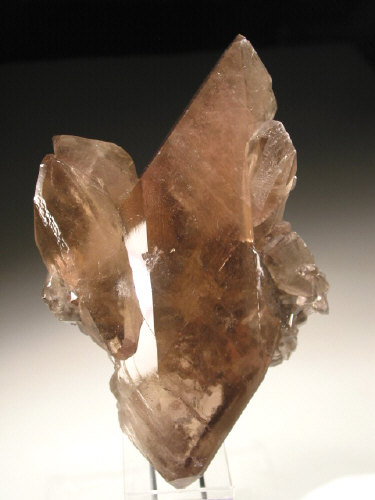 |
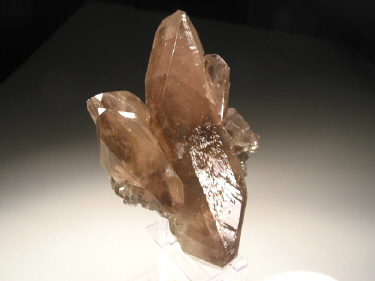 |
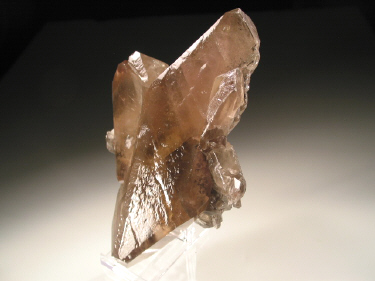 |
|
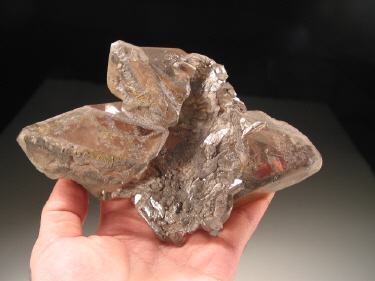
|
|
DXL3
Celestite
with Calcite
Clay Center, Ottawa County, Ohio
16.5x
4.5x 1.4 cm
$275
A
large celestite crystal with a couple double terminated calcites perched
on its edges, from Clay Center, Ohio. This area is better known
for its zoned brown fluorites.
This
is a particularly sizable and exceptionally sharp example, with a
serrated termination that would almost make it suitable for self defense
in Tucson.
This
is the sort of material that turns up for sale in Midwestern states,
where it has been field collected for decades, though which is seldom
seen elsewhere. At international shows, the bulk of the celestites
seem to be from Madagascar, with the odd piece from Mexico thrown into
the mix.
|
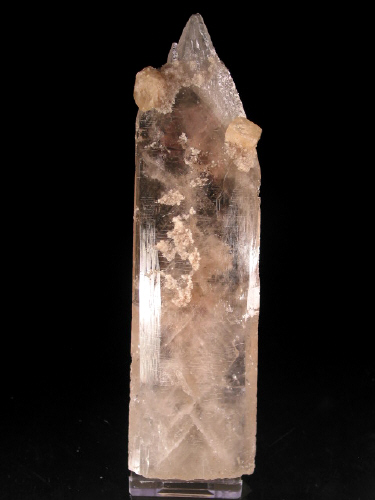 |
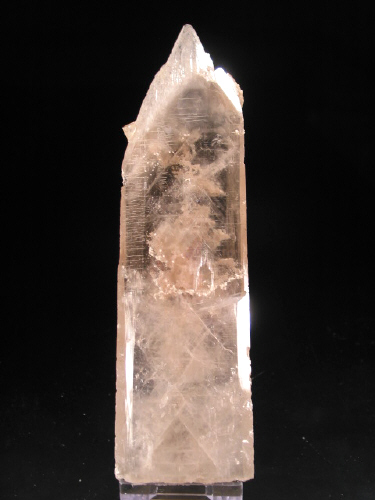 |
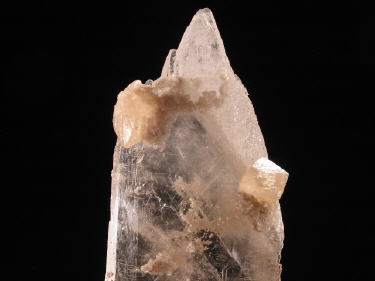
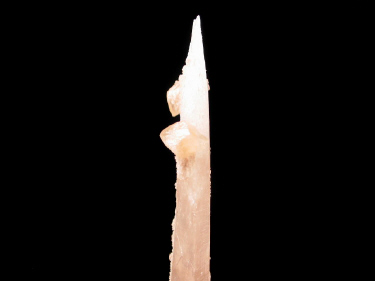
|
|
DXL4
Pyrite Stalactite
Ross
Co., Ohio, United States
16.2x
5.5x 4.8 cm
$250
A
decently sized pyrite stalactite from Ohio, composed of numerous
octahedral crystals. There is a portion missing on the back near the termination,
but as shown, the piece still displays perfectly from multiple angles. |
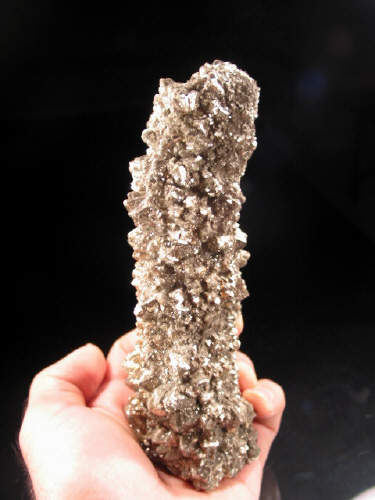 |
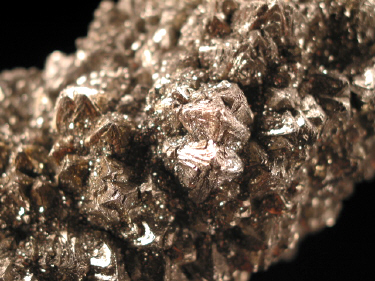 |
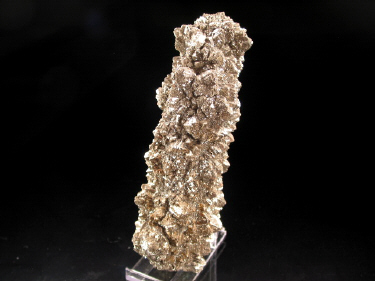 |
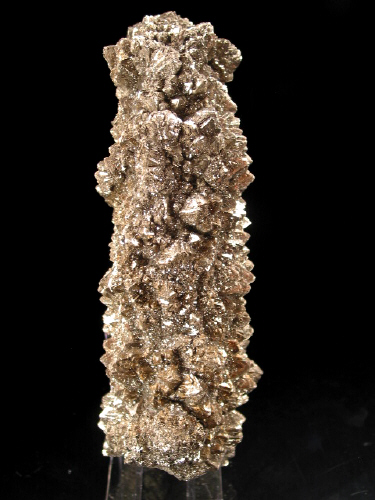 |
|
RESERVED
DXL5
Aragonite Stalactite
West
Wind Cave, Stauton, Augusta Co., Virginia, United States
18.8x
8.0x 6.5 cm
$280
An
old aragonite stalactite from Virginia, if you look down from the top
(slightly visible in the bottom-right image) you can see the hole that
the carbonate-bearing water passed through, gradually depositing the
aragonite that grew into the formation that you see here.
There
are a couple blemishes here and there, but overall the piece is exactly
as shown in the photographs. An old and unusual piece, from an
unusual locality.
|
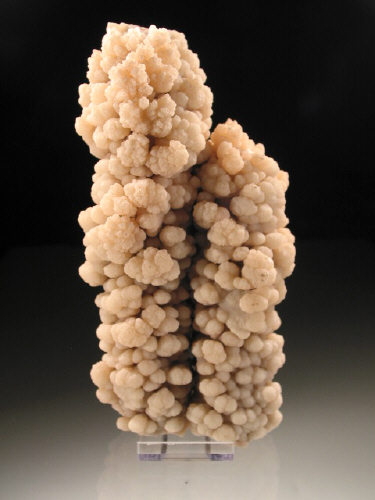 |
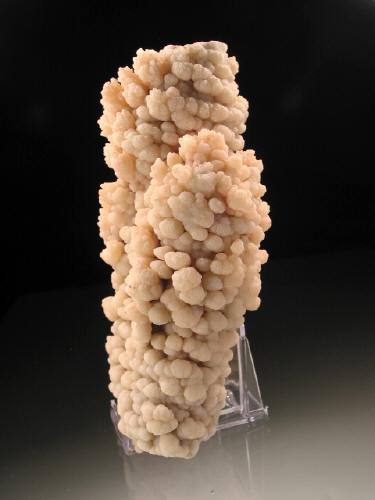 |
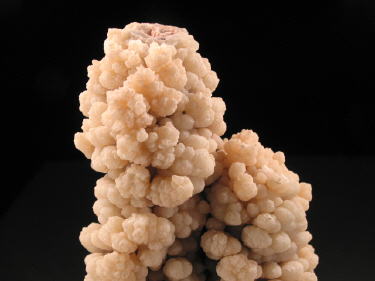 |
|
DXL6 Calcite
Stalactite
Puerto
Rico (!), United States
16.2x
4.6x 4.8 cm
$195
A
calcite stalactite, and the only specimen I have ever seen from Puerto
Rico. There are a few chips/ scuffs that are hard to see in the
pictures.
If
it were from China I would never have bothered posting it, but I thought
it was very interesting.
|
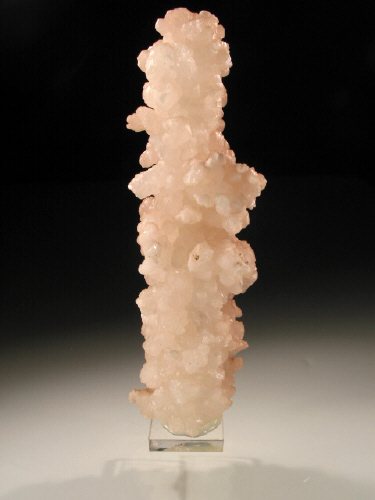 |
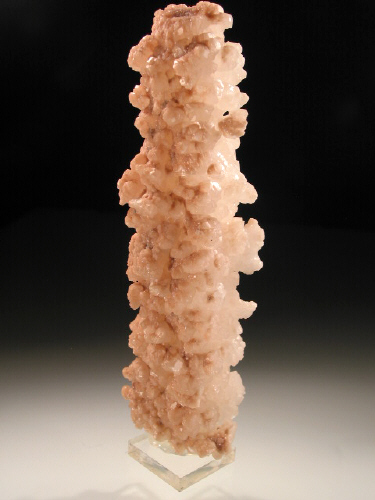 |
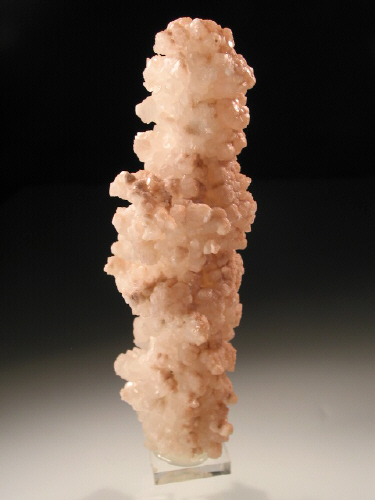 |
|
DXL7 Tourmaline var. Liddicoatite
Sahatany Pegmatite Field, Vakinankaratra Region, Antananarivo Province, Madagascar
3.1x
1.3x 0.7 cm
$280
A
very bright, magenta colored tourmaline with a flat termination, from
Madagascar. The piece lacks clarity, but again, the color is
exceptional-- brighter than anything from Afghanistan or Pakistan (even
their irradiated pieces) and probably brighter than most things from
Brazil or Nigeria.
Liddicoatite
is the calcium bearing member of the tourmaline group.
|
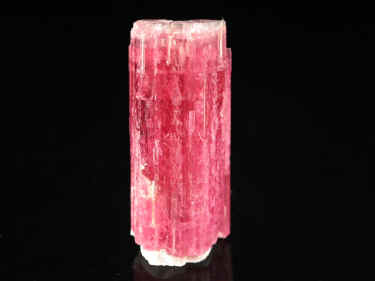 |
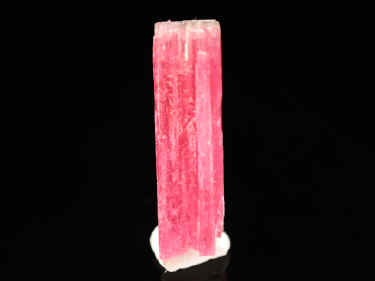 |
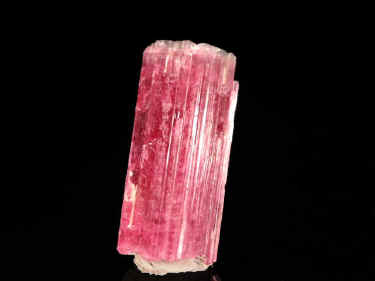 |
|
DXL8 Tourmaline var. Liddicoatite
Sahatany Pegmatite Field, Vakinankaratra Region, Antananarivo Province, Madagascar
3.0x
1.2x 0.3 cm
$185
An
unsual liddicoatite crystal from Madagascar-- it's nearly flat.
The piece is sharply terminated with good color.
Liddicoatite
is the calcium bearing member of the tourmaline group.
|
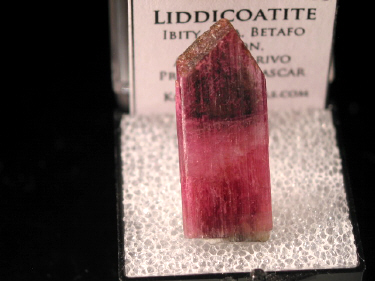 |
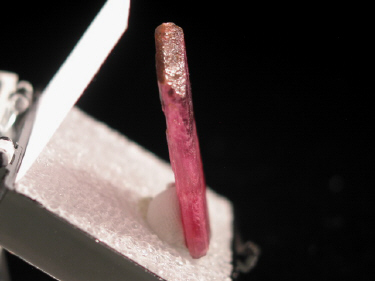 |
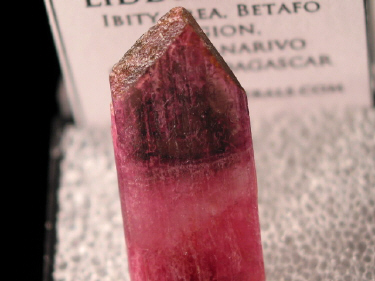 |
|

DXL9 Tourmaline var. Liddicoatite
Sahatany Pegmatite Field, Vakinankaratra Region, Antananarivo Province, Madagascar
2.0x
1.1x 1.0 cm
$145
A
thumbnail specimen consisting of a terminated pink Liddicoatite crystal
from Madagascar.
Liddicoatite
is the calcium bearing member of the tourmaline group.
|
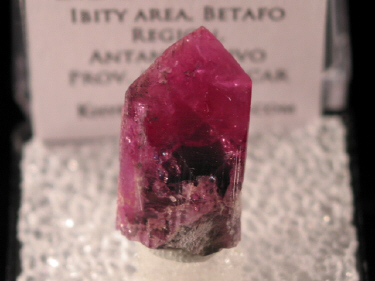 |
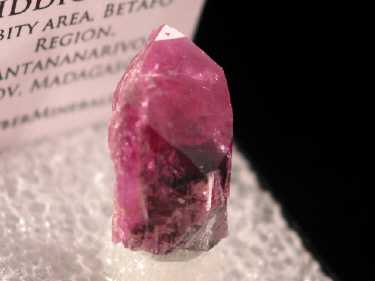 |
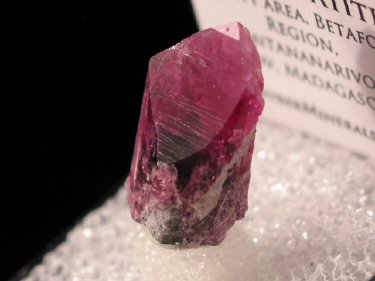 |
|
DXL10 Tourmaline var. Liddicoatite
Sahatany Pegmatite Field, Vakinankaratra Region, Antananarivo Province, Madagascar
2.3x 0.85x 0.7 cm
$165
A
thumbnail specimen consisting of a terminated pink Liddicoatite crystal
from Madagascar.
Liddicoatite
is the calcium bearing member of the tourmaline group.
|
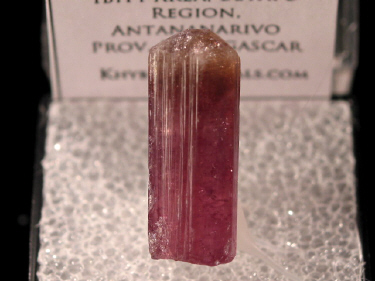 |
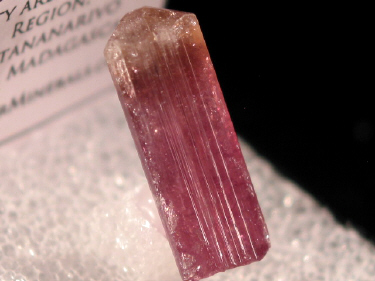 |
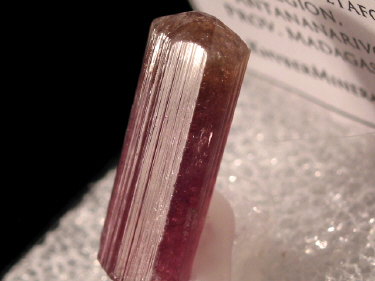 |
|
DXL27 Tourmaline var. Liddicoatite
Sahatany Pegmatite Field, Vakinankaratra Region, Antananarivo Province, Madagascar
2.0x
0.85x 0.8 cm
$125
A
thumbnail specimen consisting of a terminated pink Liddicoatite crystal
from Madagascar.
Liddicoatite
is the calcium bearing member of the tourmaline group.
|
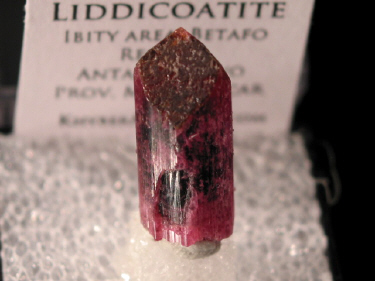 |
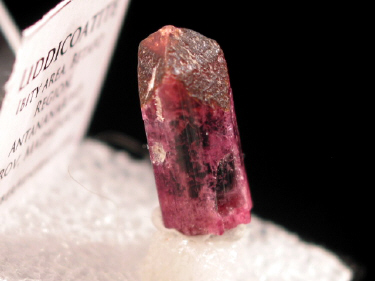 |
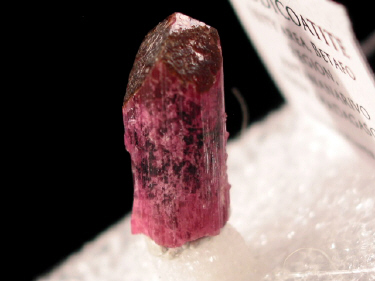 |
|
DXL27
Dioptase
Tsumeb Mine, Otjikoto Region, Namibia
9.2x 6.1x 6.7 cm
$265
A
cabinet dioptase specimen with crystals scattered throughout. For
a Tsumeb dioptase of this size, it's a reasonably good price.
|
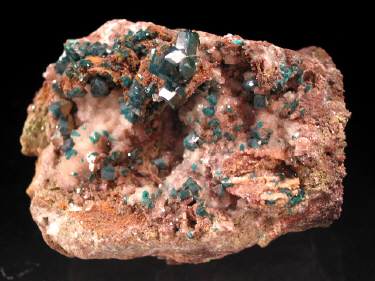 |
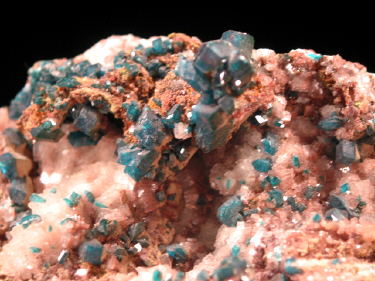 |
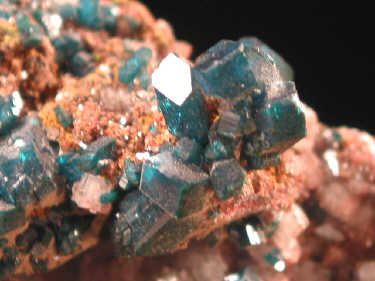 |
|
DXL10
Malachite
Tsumeb Mine, Otjikoto Region, Namibia
5.6x 4.5x 3.6 cm
$235
An
unusual malachte specimen from Tsumeb. My guess would be that it
is a pseudomorph after another mineral (azurite would be the likely
candidate) but the radial form with raised plateaus doesn't really fit
azurite. Adamite takes that form, but I don't think that malachite
would pseudomorph that mineral.... so it could just be a primary growth.
|
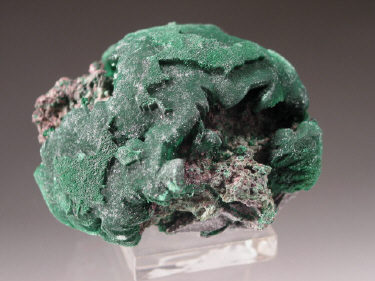 |
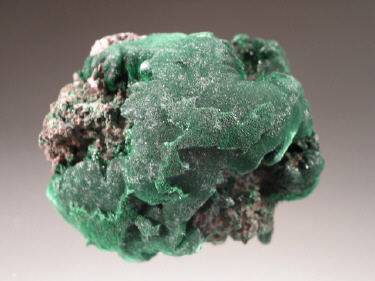 |
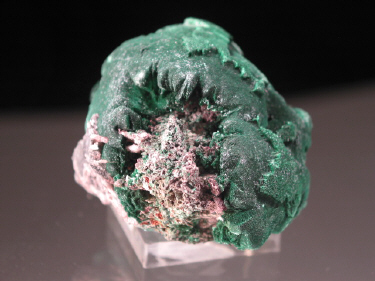 |
|
DXL11
Copper
Milpillas
Mine, Cuitaca, Mun. de Santa Cruz, Sonora, Mexico
10.7x
9.9x 0.8 cm
$220
A
decently sized plate of crystalline copper from recent finds at the
Milpillas Mine.
By the standards of Michigan, they are nothing particularly special, but native copper from Mexico is pretty rare, and these bear a resemblance to the arborescent growths from Kazakhstan.
Better
than average crystallization for the locality.
|
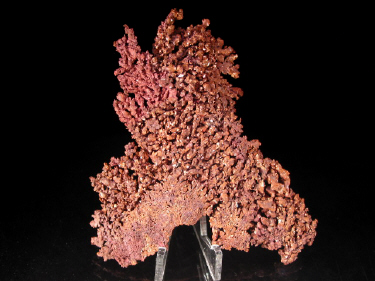 |
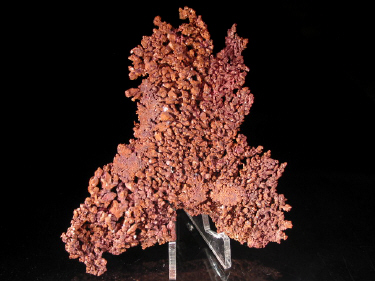 |
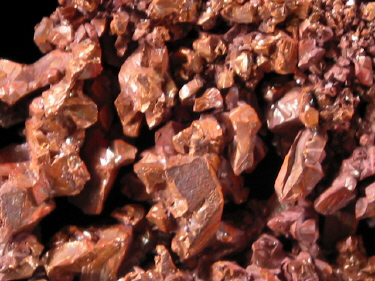 |
|
DXL12
Azurite
Milpillas
Mine, Cuitaca, Mun. de Santa Cruz, Sonora, Mexico
6.2x 3.3x 1.2
cm
$285
A group of lustrous and inky blue azurite crystals
from recent finds at the Milpillas Mine.
For
the size, I think this is a very good price, particularly given the
asking prices at shows and elsewhere on the internet.
|
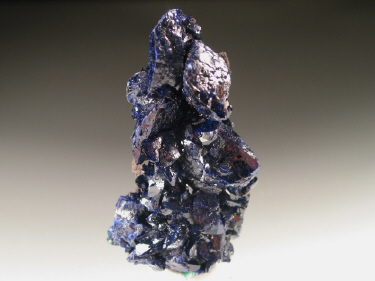 |
 |
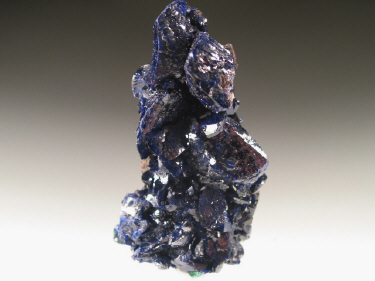 |
|
DXL13
Malachite
Milpillas
Mine, Cuitaca, Mun. de Santa Cruz, Sonora, Mexico
8.1x 6.6x 2.6
cm
$175
Over
the last couple years, the Milpillas Mine has gained fame for its copper
minerals, most notably its arurite and malachite after azurite pseudos. The
mine has also produced decent cuprite, and interesting cuprite and
chrysocolla included agates.
This
is a plate of fuzzy looking primary malachite that differs substantially from
much of the earlier Milpillas Malachite-- those were almost all pseudmorphs after azurite.
|
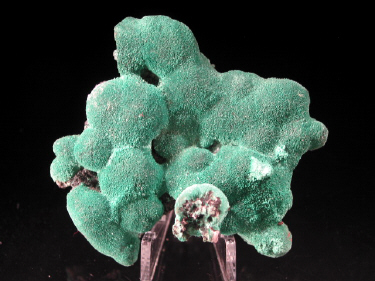 |
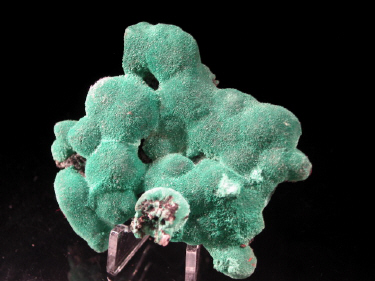 |
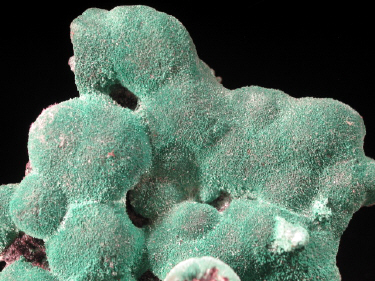 |
|
DXL14
Malachite
Milpillas
Mine, Cuitaca, Mun. de Santa Cruz, Sonora, Mexico
7.0x 4.4x 0.9
cm
$155
Over
the last couple years, the Milpillas Mine has gained fame for its copper
minerals, most notably its arurite and malachite after azurite pseudos. The
mine has also produced decent cuprite, and interesting cuprite and
chrysocolla included agates.
This
is a plate of fuzzy looking primary malachite that differs substantially
from much of the earlier Milpillas Malachite-- those were almost all
pseudmorphs after azurite.
|
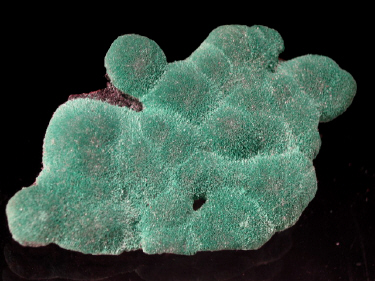 |
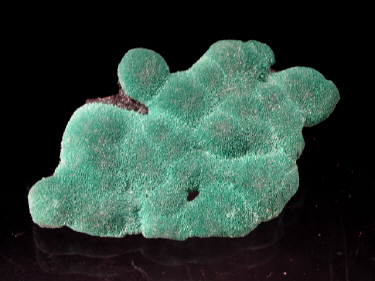 |
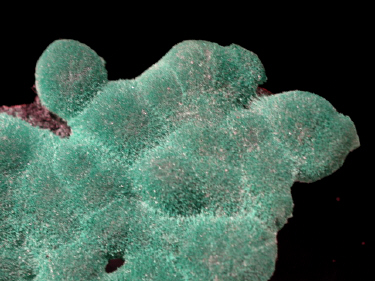 |
|
DXL15
Malachite
Milpillas
Mine, Cuitaca, Mun. de Santa Cruz, Sonora, Mexico
7.4x 4.7x 1.4
cm
$165
Over
the last couple years, the Milpillas Mine has gained fame for its copper
minerals, most notably its arurite and malachite after azurite pseudos. The
mine has also produced decent cuprite, and interesting cuprite and
chrysocolla included agates.
This
is a plate of fuzzy looking primary malachite that differs substantially from
much of the earlier Milpillas Malachite-- those were almost all pseudmorphs after azurite.
|
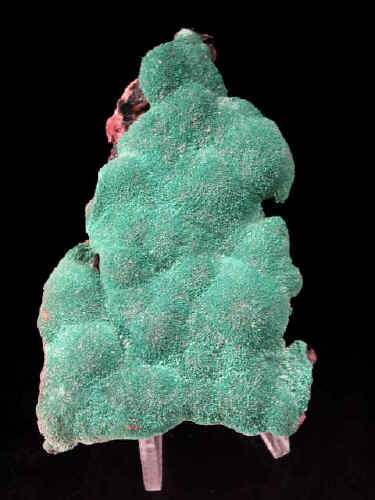 |
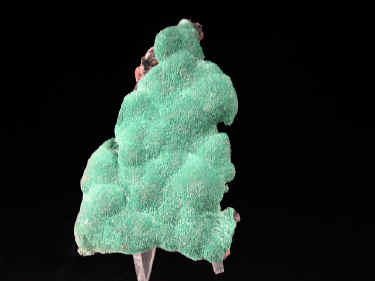 |
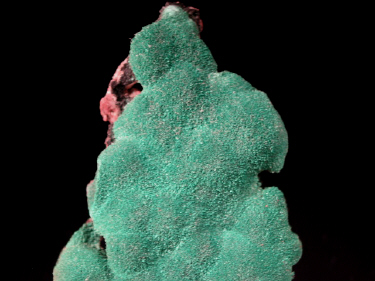 |
|
DXL16
Malachite
Milpillas
Mine, Cuitaca, Mun. de Santa Cruz, Sonora, Mexico
8.4x 5.0x 3.1
cm
$145
Over
the last couple years, the Milpillas Mine has gained fame for its copper
minerals, most notably its arurite and malachite after azurite pseudos. The
mine has also produced decent cuprite, and interesting cuprite and
chrysocolla included agates.
This
is a plate of fuzzy looking primary malachite that differs substantially from
much of the earlier Milpillas Malachite-- those were almost all pseudmorphs after azurite.
|
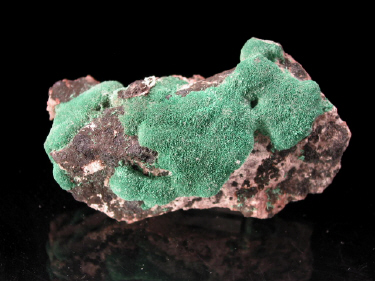 |
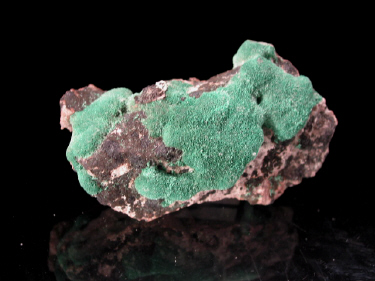 |
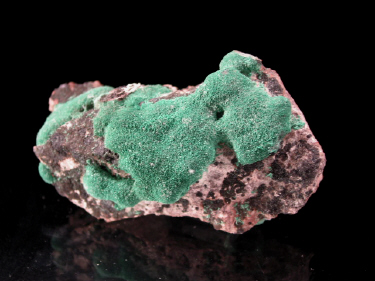 |
|

DXL17
Aquamarine
Mt.
Antero, Chaffee Co., Colorado, United States
3.8x
3.4x 2.4 cm
$200
A
rare example of lightly colored aquamrine on a bit of smoky matrix from
Mt. Antero, Colorado.
Hard
to find, especially as a matrix specimen, and I imagine that any claim
owners who set up in Tucson would ask a much higher piece for fresher
pieces....
|
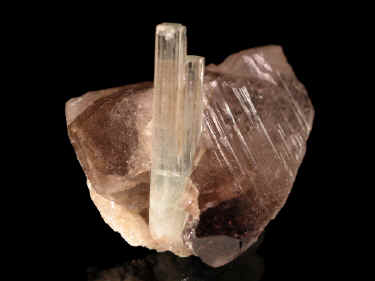 |
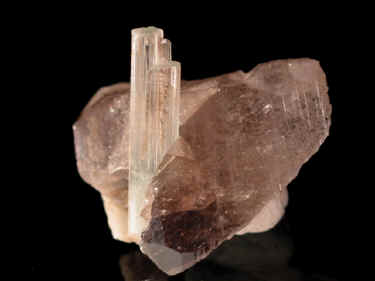 |
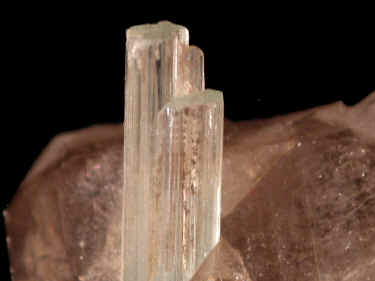 |
|
DXL28
Calcite
Yizhang Co., Chenzhou Prefecture, Hunan Province, China
10.5x 10.2x 5.2 cm
$175
A
group of pagoda like, stacked calcite crystals from China, There
is a bit of damage, particularly as minor edge chipping/ scuffs. Overall
however, it's what you see in the pictures.
|
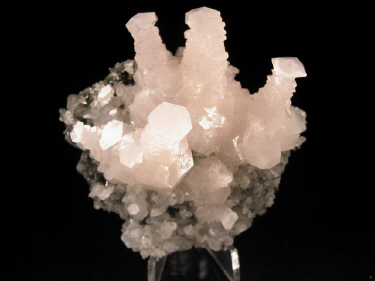 |
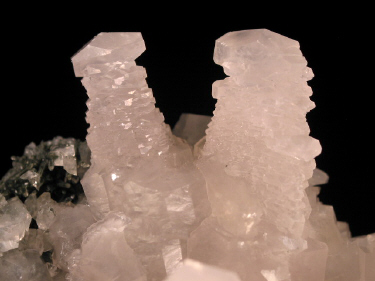 |
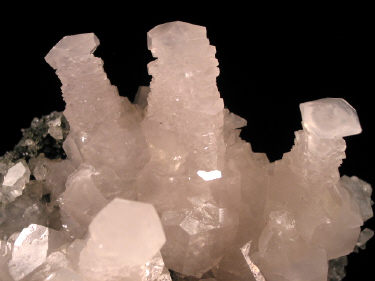 |
|
DXL18 Calcite
Picher,
Tri-State Lead Zinc District, Oklahoma, United States
13.0x
9.4x 6.5 cm
$275
A
group of calcite crystals on a chert matrix, featuring a single larger
yellow crystal.
These
do not turn up for sale very often any more, though the piece is
particularly notable for having its termination. On the odd occasions
when I do see these calcites, there are almost always very significant
cleaves.
Mining
in the area began around the 1850's-60's on the Missouri side of the
district, with the last mine closing in Oklahoma in 1967 (that should
provide some idea of the age of this piece.) Because of the
environmental impact of the extensive lead mining, the area is today
home to 3 Superfund sites, and Picher itself is a ghost town.
|
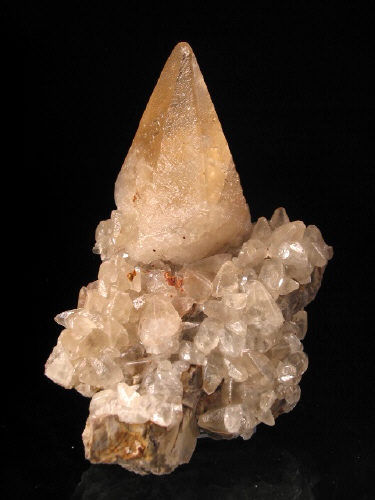 |
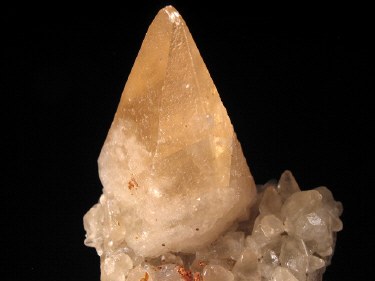 |
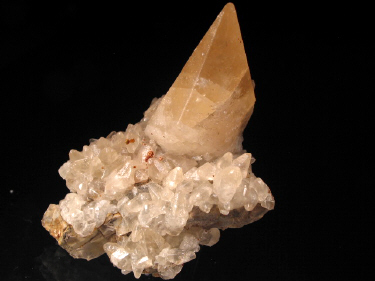 |
|

DXL19
Sphalerite
Picher,
Tri-State Lead Zinc District, Oklahoma, United States
12.4x
7.5x 5.0 cm
$335
A
cluster of dark, metallic sphalerite crystals on matrix, from a classic
American locality.
Sphalerite
and galena specimens from this area, tend to have a sharpness and crisp
geometric quality that I don't often see in specimens from other
localities-- I think it's a combination of distinct crystals, clean
edges and extra three-dimensionality, attributes that seem to lack in
the jumbled sphalerites from any of the other major localities in Peru,
Bulgaria, Kosovo or China.
In
addition to displaying that special "Tri-State crispness", the
piece is well balanced, and has very good composition.
Mining
in the area began around the 1850's-60's on the Missouri side of the
district, with the last mine closing in Oklahoma in 1967 (that should
provide some idea of the age of this piece.) Because of the
environmental impact of the extensive lead mining, the area is today
home to 3 Superfund sites, and Picher itself is a ghost town.
|
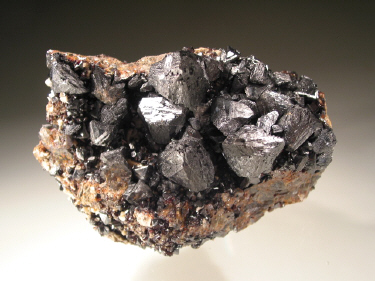 |
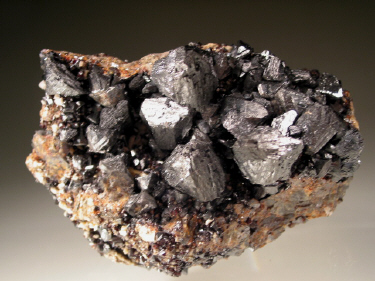 |
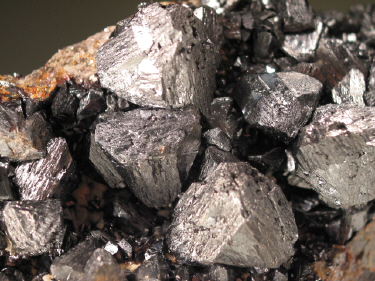 |
|
DXL20
Sphalerite
Picher,
Tri-State Lead Zinc District, Oklahoma, United States
9.6x
10.2x 6.5 cm
$365
A
cluster of large sphalerite crystals on a dolomite-covered chert matrix,
from a classic US locality.
There
is one small area of damage on the bottom right side of the crystal
(best visible in the side view) but this does not particularly detract
when positioned for display. Overall the piece is extremely well
balanced and put together.
Mining
in the area began around the 1850's-60's on the Missouri side of the
district, with the last mine closing in Oklahoma in 1967 (that should
provide some idea of the age of this piece.) Because of the
environmental impact of the extensive lead mining, the area is today
home to 3 Superfund sites, and Picher itself is a ghost town.
|
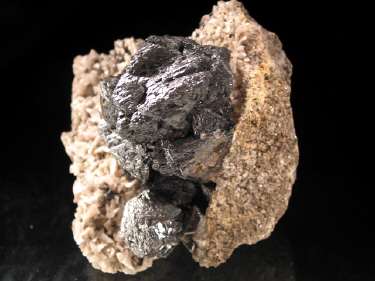 |
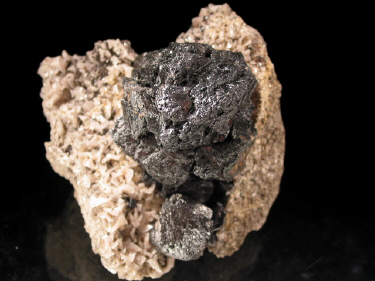 |
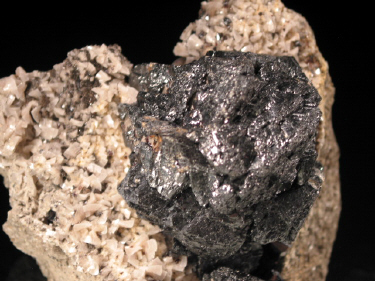 |
|
DXL24
Galena
Picher,
Tri-State Lead Zinc District, Oklahoma, United States
18.2x
11.3x 5.4 cm
$460
Ex.
Colorado School of Mines
A
old cabinet specimen of galena on a chert plate. The cubic galena
crystals have interesting octahedral growths on the main faces, and some
of the crystals have a later coverage of marcasite. There are a
couple minor chips, but they are hard to spot, unless you are looking
for them.
This
could be split into two specimens, or even displayed horizontally as
is. Given the age of the piece and the relative scarcity of larger
examples, I decided to leave it as is.
This
is classic US material, not to be confused with more contemporary
specimens from the Viburnum Trend District in neighboring Missouri.
Mining
in the area began around the 1850's-60's on the Missouri side of the
district, with the last mine closing in Oklahoma in 1967 (that should
provide some idea of the age of this piece.) Because of the
environmental impact of the extensive lead mining, the area is today
home to 3 Superfund sites, and Picher itself is a ghost town.
|
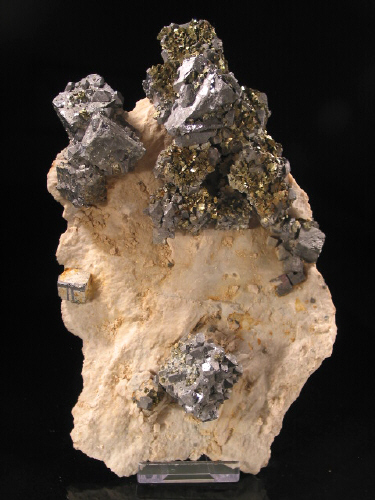 |
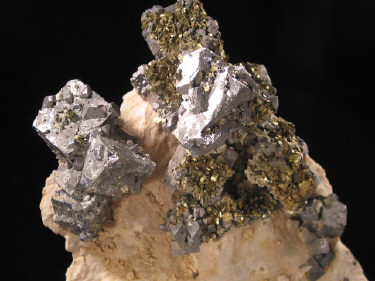 |
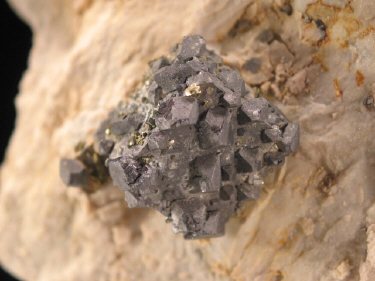 |
|
DXL25
Galena
Picher,
Tri-State Lead Zinc District, Oklahoma, United States
11.0x
8.2x 5.3 cm
$275
A
pair of lustrous galena crystals with sharp edges from a classic
American locality. There is no matrix on this one, the piece is
flat on the back.
Galena and
sphalerite
specimens from this area, tend
to have a sharpness and crisp geometric quality that I don't often see
in specimens
from other localities-- I think it's a combination of distinct crystals,
clean edges and extra three-dimensionality, a set of attributes that seems to lack
in the galenas from any of the other major localities in
Peru, Bulgaria, Kosovo or Missouri.
That
"Tri-State crispness" is also what makes them so easily
distinguishable from the contemporary Viburnum Trend specimens, which
tend to have compound faces that contribute to an overall messier
appearance.
Mining
in the area began around the 1850's-60's on the Missouri side of the
district, with the last mine closing in Oklahoma in 1967 (that should
provide some idea of the age of this piece.) Because of the
environmental impact of the extensive lead mining, the area is today
home to 3 Superfund sites, and Picher itself is a ghost town.
|
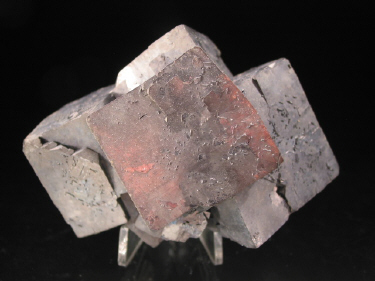 |
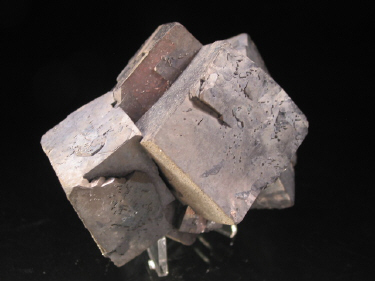 |
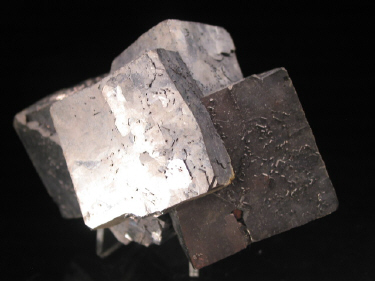 |
|
DXL21
Galena
Picher,
Tri-State Lead Zinc District, Oklahoma, United States
6.3x
3.2x 4.0 cm
$135
A
pair of lustrous galena crystals on a chert matrix, from a classic
American locality.
Galena and
sphalerite
specimens from this area, tend
to have a sharpness and crisp geometric quality that I don't often see
in specimens
from other localities-- I think it's a combination of distinct crystals,
clean edges and extra three-dimensionality, a set of attributes that seems to lack
in the galenas from any of the other major localities in
Peru, Bulgaria, Kosovo or even Missouri.
That
"Tri-State crispness" is also what makes them so easily
distinguishable from the contemporary Viburnum Trend specimens, which
tend to have compound faces that contribute to an overall messier
appearance.
This
is an excellent miniature, very well balanced, though there is a small
chip on the corner of one of the crystals-- it doesn't really impact the
appearance, as the pictures show.
Mining
in the area began around the 1850's-60's on the Missouri side of the
district, with the last mine closing in Oklahoma in 1967 (that should
provide some idea of the age of this piece.) Because of the
environmental impact of the extensive lead mining, the area is today
home to 3 Superfund sites, and Picher itself is a ghost town.
|
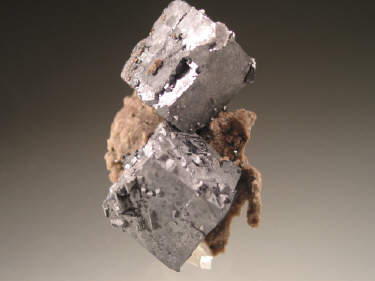 |
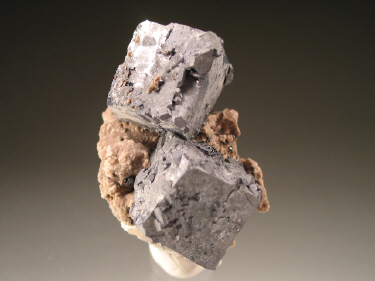 |
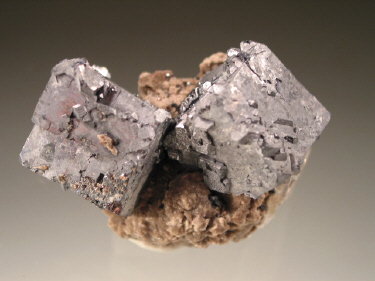 |
|
DXL22
Sphalerite
Picher,
Tri-State Lead Zinc District, Oklahoma, United States
7.8x
6.2x 3.5 cm
$185
A
group of large, distinct and very three-dimensional sphalerite crystals
on matrix, from a classic US locality.
Mining
in the area began around the 1850's-60's on the Missouri side of the
district, with the last mine closing in Oklahoma in 1967 (that should
provide some idea of the age of this piece.) Because of the
environmental impact of the extensive lead mining, the area is today
home to 3 Superfund sites, and Picher itself is a ghost town.
|
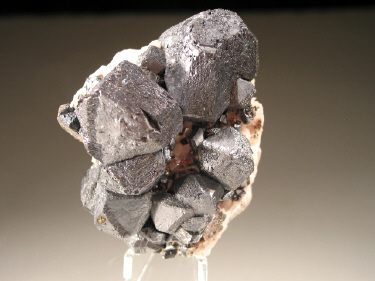 |
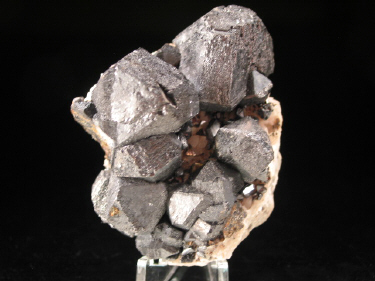 |
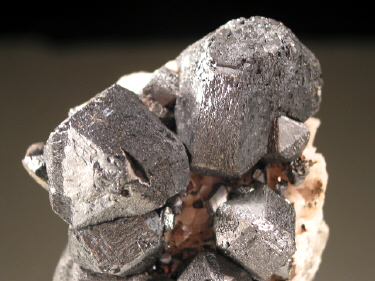 |
|
DXL23
Sphalerite
Picher,
Tri-State Lead Zinc District, Oklahoma, United States
8.8x
6.6x 3.8 cm
$175
A
cluster of dark reddish, metallic sphalerite crystals on matrix, from a classic
American locality. There is a bit of chipping on the bottom.
Sphalerite
and galena
specimens from this area, tend
to have a sharpness and crisp geometric quality that I don't often see
in specimens
from other localities-- I think it's a combination of distinct crystals,
clean edges and extra three-dimensionality, attributes that seem to lack
in the jumbled sphalerites from any of the other major localities in
Peru, Bulgaria, Kosovo or China.
Mining
in the area began around the 1850's-60's on the Missouri side of the
district, with the last mine closing in Oklahoma in 1967 (that should
provide some idea of the age of this piece.) Because of the
environmental impact of the extensive lead mining, the area is today
home to 3 Superfund sites, and Picher itself is a ghost town.
|
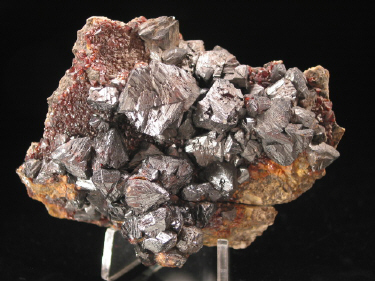 |
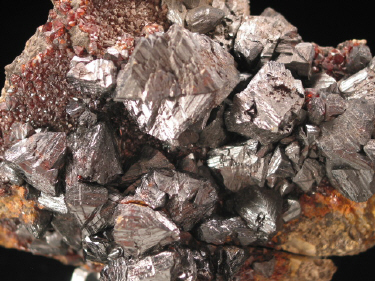 |
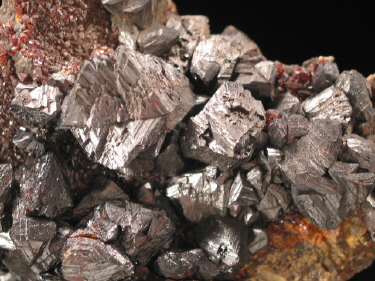 |
Click
here to see the latest clearance page (specimens
added 12/8/2013)
|